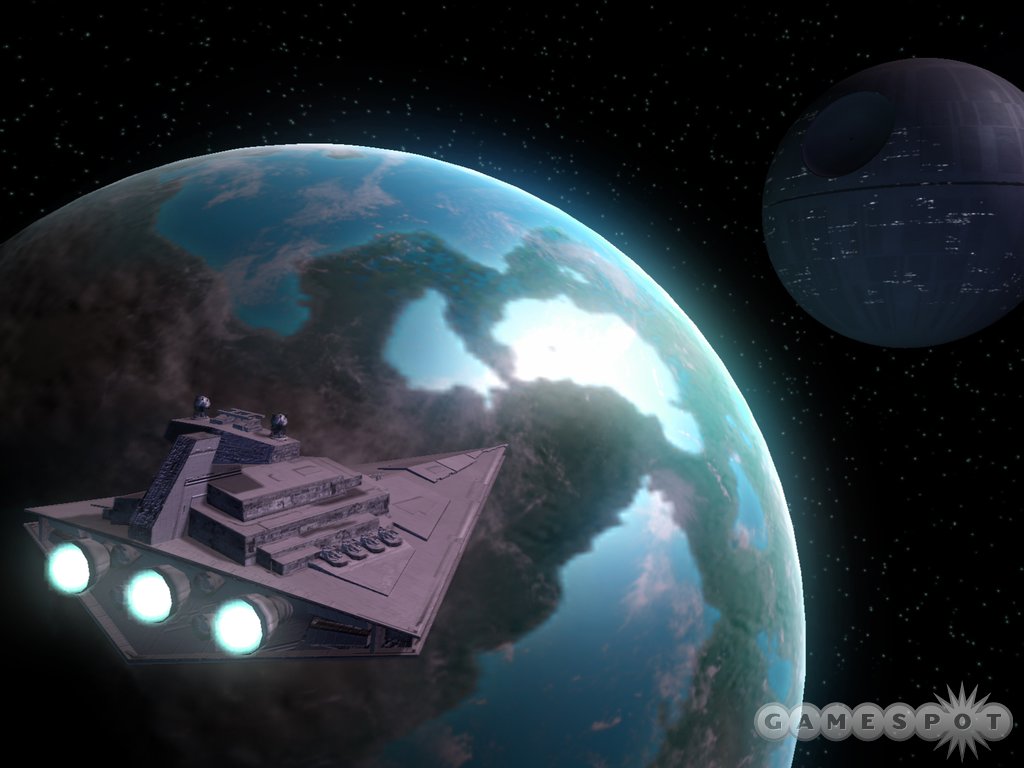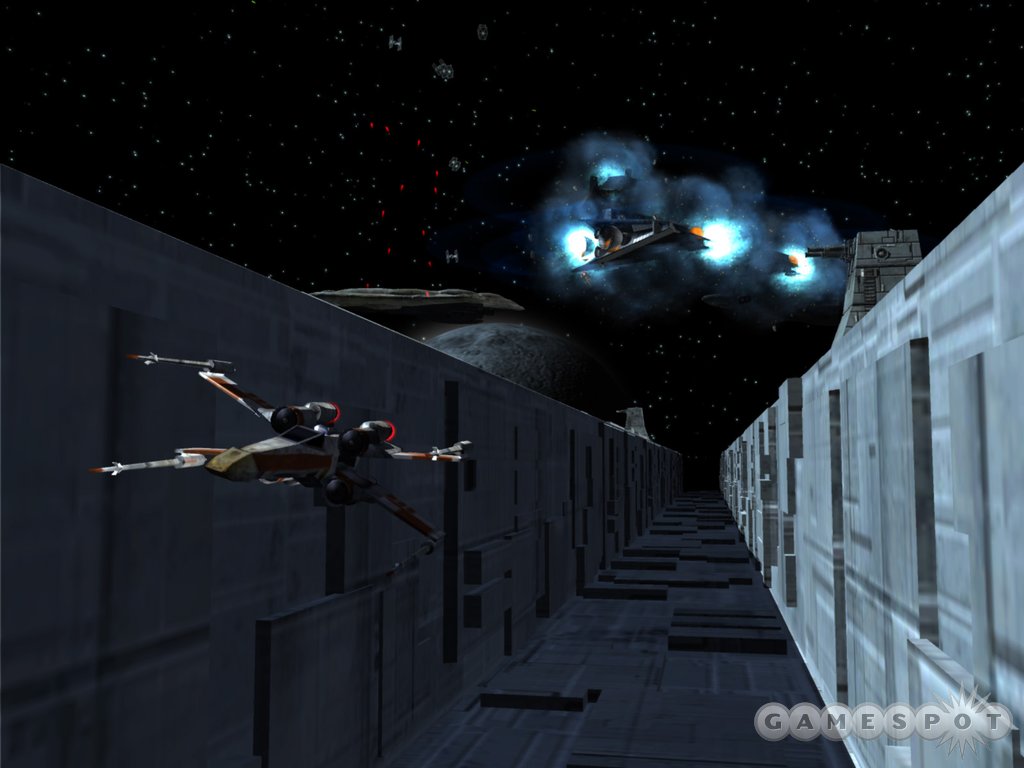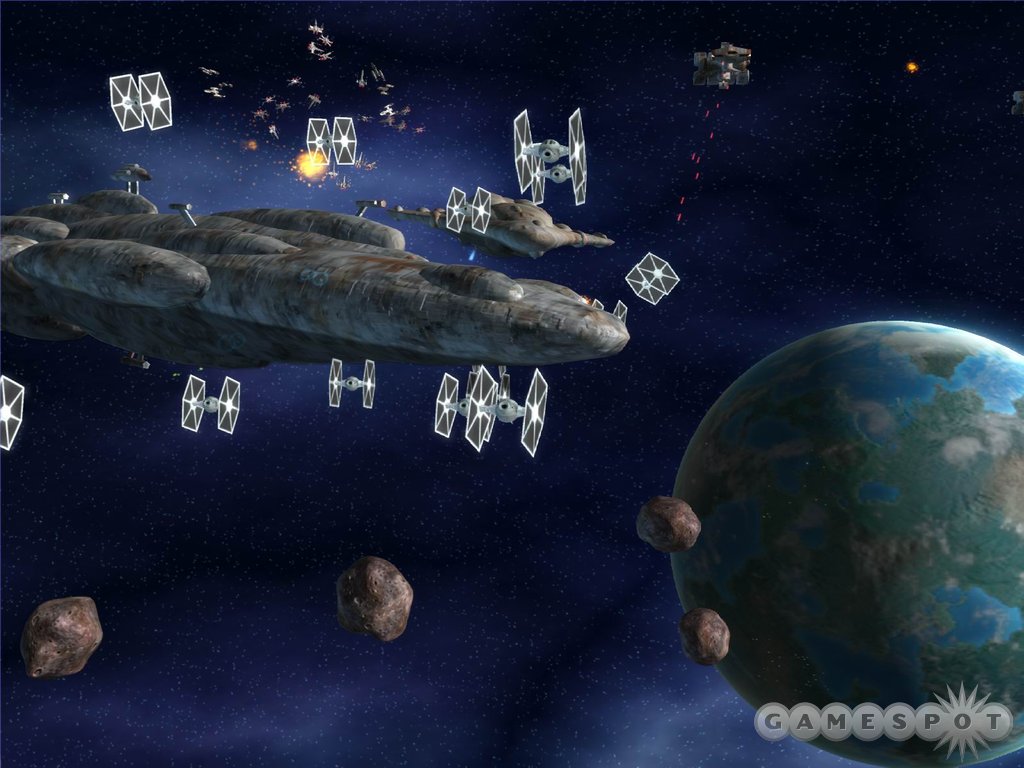Star Wars: Empire at War Designer Diary #1 - When Fleets Collide
Lead designer Joe Bostic describes how the team designed the space battles with an eye toward capturing the <i>Star Wars</i>-movie feel.
With an eye toward capturing the thrilling land and space battles seen in the original Star Wars trilogy, LucasArts and Petroglyph are working on the upcoming real-time strategy game Star Wars: Empire at War. In this epic RTS, you'll command the forces of the Galactic Empire or the Rebel Alliance as you attempt to conquer the galaxy. The game actually has a strategic layer that lets you move fleets and armies around the many planets of the galaxy. And when armies or navies clash, you can fight the battles out in real time. There are high hopes for Empire at War, partly because it's based on the "cool" trilogy that we grew up with but also because developer Petroglyph employs many veterans of the original Command & Conquer development team. In this first chapter of our designer diaries, lead designer Joe Bostic describes how the team made the space battles in Empire at War. The game is scheduled to ship early next year.

When Fleets Collide
Joe BosticLead designer, Petroglyph
Star Wars: Empire at War was conceived as a real-time strategy game, set in the classic Star Wars universe, that would have both space and land combat crafted to the styles witnessed in the movies. However, space and land combat (if left isolated) would be missing something, since Star Wars battles always occurred in the context of a larger galaxy. The missing link was a controllable galaxy state that put each battle into context. This was the final structural piece of the puzzle. It allows the player to utilize strategy and tactics on a grand scale...strategy in setting up battles and the tactics to carry them to victory. It opens up gameplay options that otherwise don't normally exist in traditional RTS games. The combination of these elements allows the player to control an individual stormtrooper--all the way up to the giant Death Star--in a unified context of conquering the galaxy.
There are many challenges to creating a game of this type, but here I'll explain the thoughts behind one aspect: space combat. A priority for us was to ensure that players had easy control of their ships and that we were providing the sense of scale between small one-man fighters and supermassive Star Destroyers, thus capturing the feel of epic Star Wars space battles.
The first issue was how to make the potential three-dimensional freedom of movement in space not interfere with gameplay. The solution was to use a 2.5-dimensional system, where ships are generally bound to a two-dimensional playfield but can autonomously move up and down as appropriate for the activity they are performing. This allows the smaller ships to pass over the larger ships, while fighters can freely dive and weave between. The results are tactically functional, and they captured the feeling of three-dimensional space while still remaining visually consistent with the movies.
The second issue dealt with making the larger ships appear massive and the smaller ships feel nimbler, just like the ones involved in the battle over Endor. The solution was to create momentum in the movement of the larger ships. The larger ships take longer to get up to full speed, and even when stopped, they drift forward slowly. Meanwhile, the smaller fighters can accelerate quickly and turn on a dime. It ends up being similar to how battleships and fighters would fight a World War II naval battle. Further enhancing the massive nature of the bigger ships, we allowed for pieces of the ship to blow off as they take damage.
The third issue to capture the feel of Star Wars battles is accomplished partly by the scale difference between the ships, partly by how they move (see below), and, finally, by how the player can watch the battle as it progresses. Smaller ships, such as fighters, move in semiautonomous groups--where the player gives general orders to the squadron, and the fighters decide for themselves how best to react. The result is fighters that dogfight as they did in the movies, while the bigger ships slowly maneuver to bring heavy turbolasers in range of the targets as they blast away chunks of the enemy ships. True to the Star Wars cinematic experience, the viewer becomes immersed in the battle using a cinematic battle-cam system that we designed for the game. Players can activate that mode at any time, and the camera will switch between points of interest in the battle and will move throughout the action, as if a director were calling the shots. The effect is quite dramatic and brings the player into the action in a cinematic way. This battle-cam system makes for dramatic combat, but there's more to combat than just drama.
The ultimate measure of combat is victory in the war. This is where the context of the larger galaxy comes into play. At the simplest level, the player decides where to attack in order to best facilitate victory. When things are not going well, retreating is a viable option too. The galaxy is large, and information gathering is limited, so surprises can happen. For example, when dropping out of hyperspace into a hostile system, there could be an unexpected massive enemy fleet waiting to attack. The player can then decide to retreat to a nearby system to marshal forces for a subsequent attack or engage in the battle. However, even when outnumbered in a particular situation, fighting a losing battle might be the road to victory. One example of this would be taking a small force of fast ships into a well-defended enemy system to use the ships' speed advantage. By carefully maneuvering through the cloaking effect of asteroid fields or other space "terrain," you can race in and destroy the enemy transports carrying ground troops before the enemy can react. Even if it ends up being a suicide mission, the destruction of the enemy's troops could easily and dramatically turn the tide of the bigger war.

This kind of tactic can occur on land as well. In fact, the Rebels are especially good at this since they have the ability to take in small invasion forces (by slipping past blockading fleets) to land at Imperial bases, catching them by surprise. There are several interesting tactics that this allows for, but talking about land combat, the planetary environments, and indigenous life as it affects gameplay is for another day.
Got a news tip or want to contact us directly? Email news@gamespot.com

Join the conversation